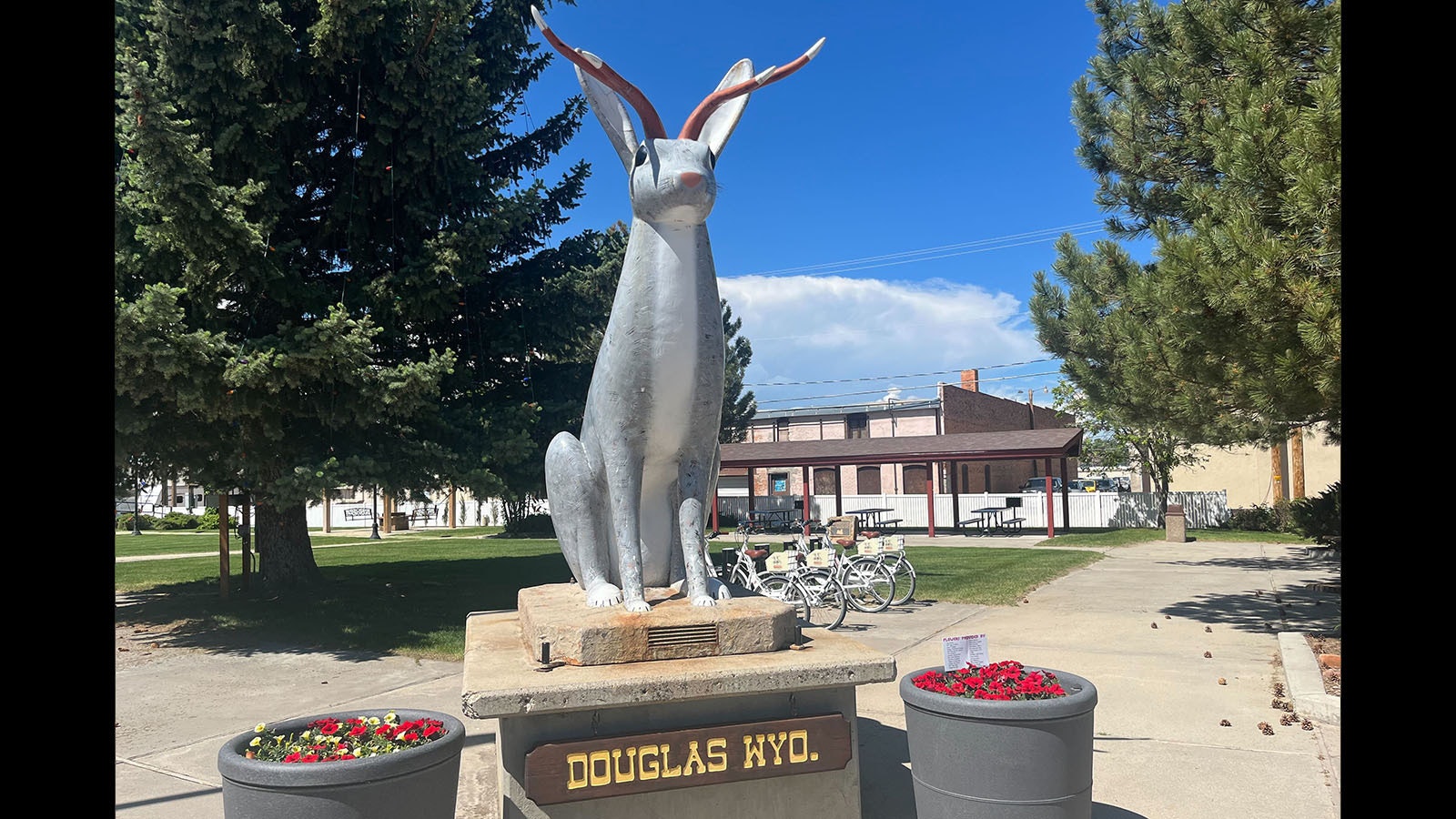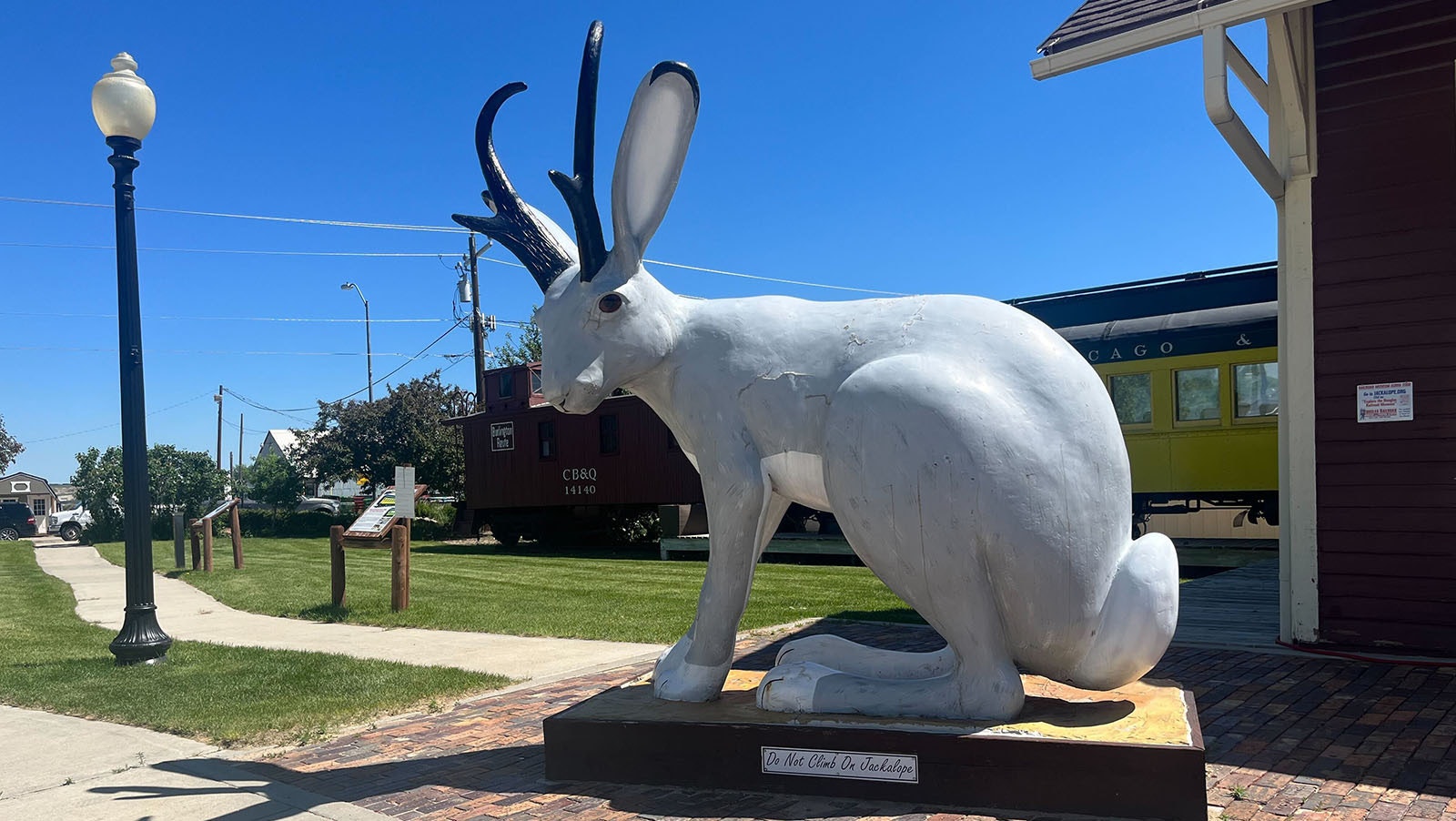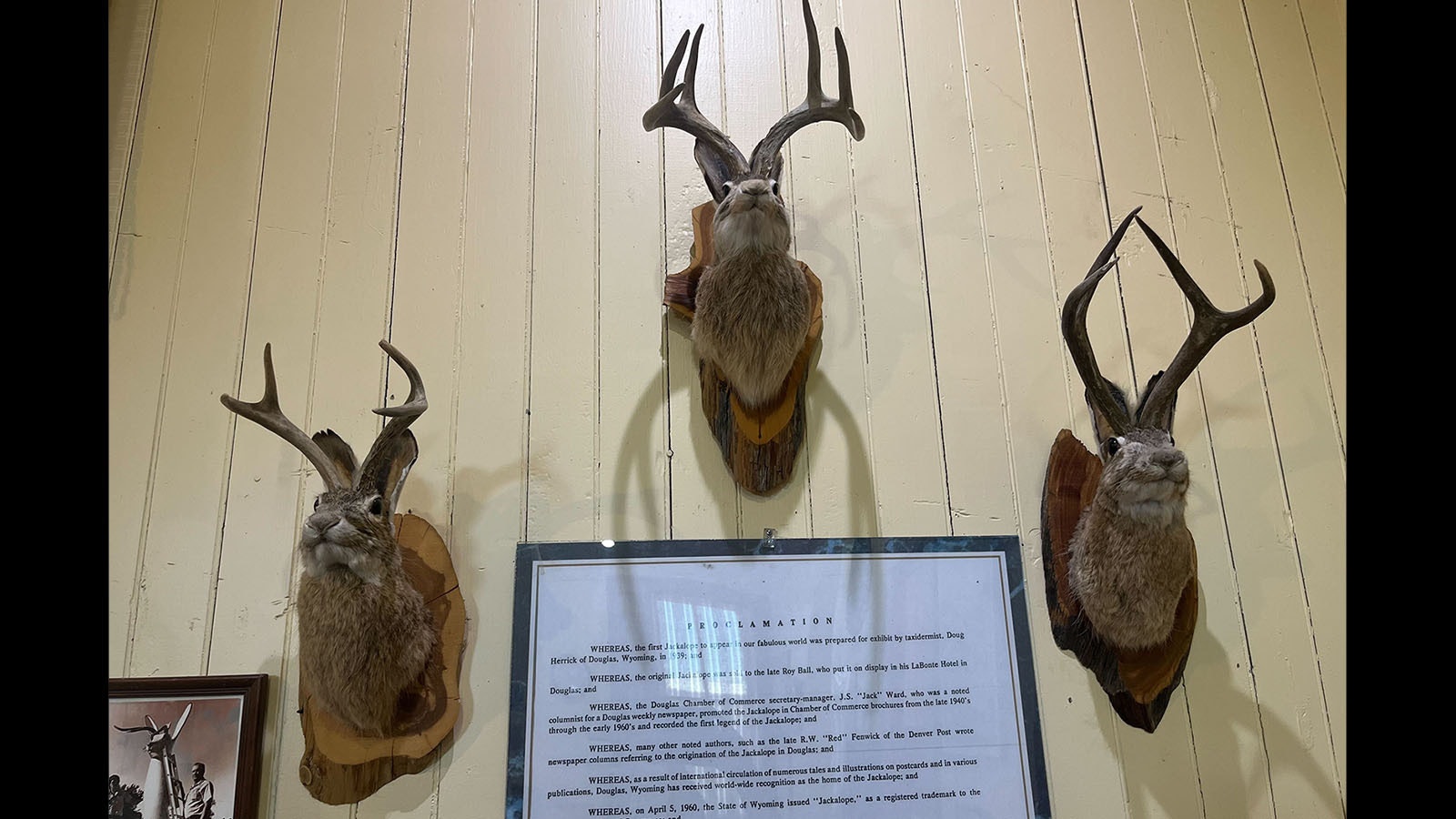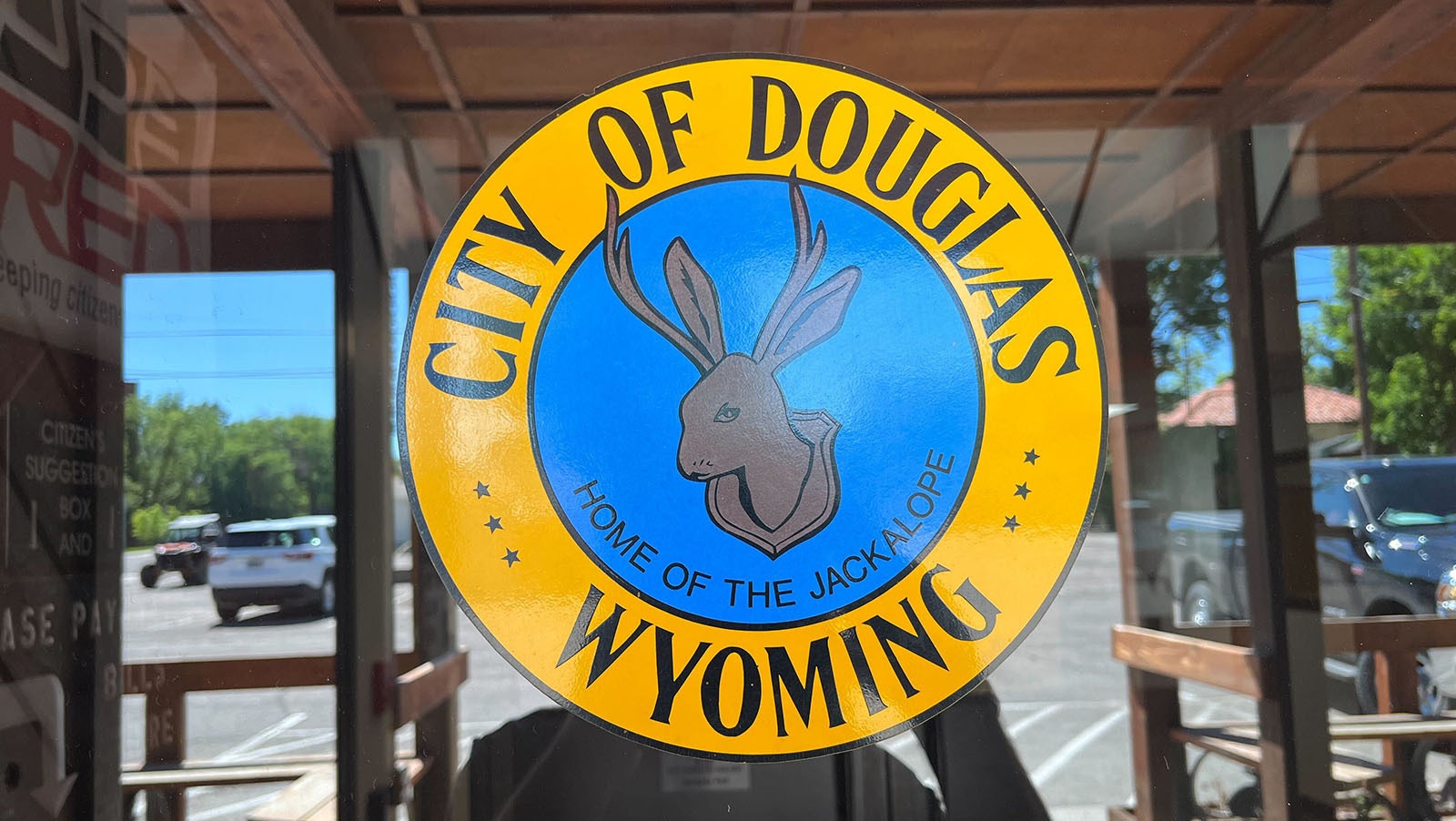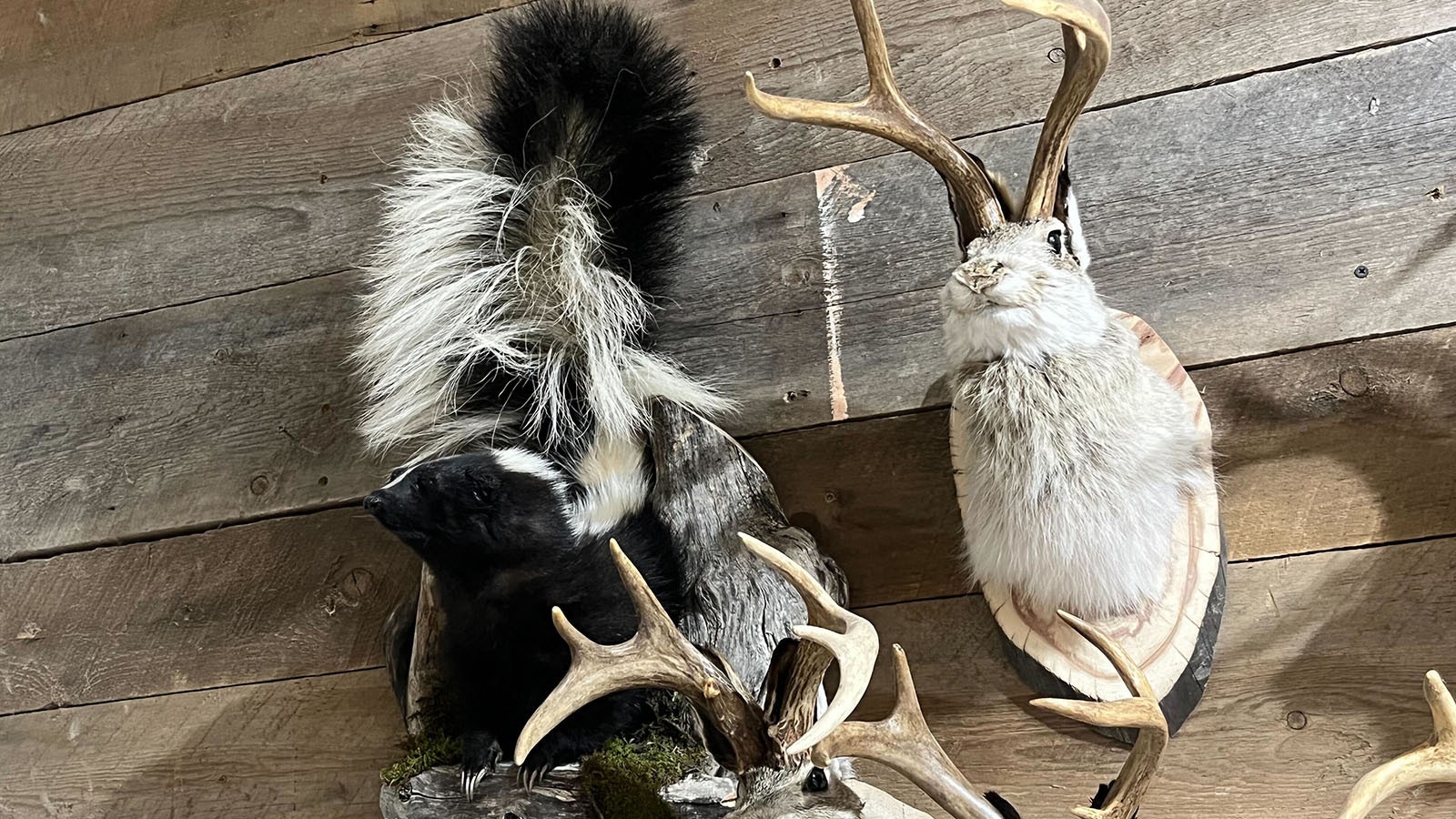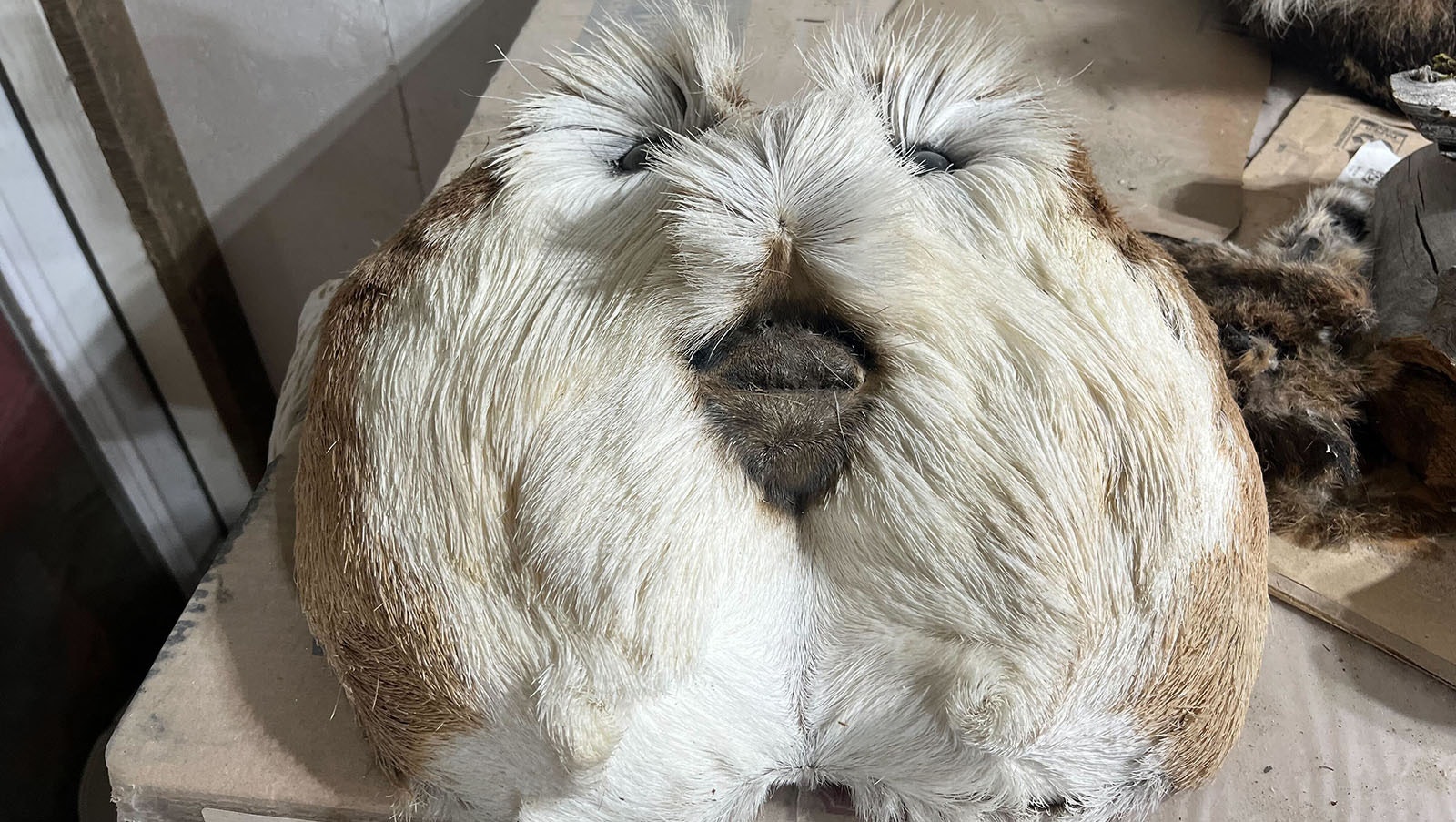When it comes to the town of Douglas, its residents sure know Jack. Jackalope that is.
The city has held an odd fascination with the mythological creature for at least 84 years.
Jackalope is a bit of an urban legend in Douglas, not unlike bigfoot, the Loch Ness Monster or any other species of cryptozoology championed by a local community.
“That’s a safe comparison,” said Jen Womack, who works with the local lodging tax board in Douglas and runs a local marketing business in the town.
The jackalope has become a vehicle for tourism in Douglas, and in many ways, an unofficial mascot for the community.
A number of statues honoring the jackalope dot the city, including the largest one at Jackalope Park, staring out intently from the town’s center square.

Tourism Drive
The jackalope has become one of the main attractions for tourists visiting Douglas over the summer months. It’s a piece of a larger, overarching push to increase tourism in Douglas by the local chamber of commerce and Main Street organizations.
“We saw a lot of people stopping in and wanting to see the jackalopes,” Womack said.
And along with that evolution, the jackalope has become a more relatable creature in recent years, as cartoon “Jack” and “Hare-iette” characters can be found plastered on walls throughout the city and on an I-25 billboard, beckoning people to come visit the city of 6,350 residents. Jack can often be found draped in a sleek red jacket or blue overalls, and Hare-iette usually has a red bandana wrapped across her furry brow. Neither can be found without a smile stretched across their faces.
Douglas hosts a Jackalope Days festival each June, an event running through this Saturday. At this event there are jackalope mascots that kids can get their photos taken with, car shows, various races and all kinds of Americana.
Amanda Boynton, a staff member at the Douglas Railroad Museum, gets countless tourists quizzing her each summer about the famous species.
“It’s one of those things that really draws people in,” she said.
What’s A Jackalope?
Almost any small town has a feature or certain claim to fame separating it from other communities. In Douglas, that fixture is the jackalope.
A jackalope is depicted as a rabbit typically affixed with pronghorn antelope antlers, but sometimes enshrined with a small deer rack atop its head. Never mind the impossibility of a rabbit keeping its head raised with the added weight.
A female jackalope has no horns, lacking any distinguishing feature from a normal jackrabbit. There are also subspecies varieties of the jackalopes known as lower and upper jacks, based on the size and shape of their horns. Boynton said the jackalope has also devolved over the years, much smaller in size than years’ past.
Sometime in the 1930s, the first jackalope to be successfully hunted was prepared for exhibit by taxidermist Doug Herrick.
The idea came about when Doug and his brother Ralph returned from a successful jackrabbit hunt and tossed the rabbits into a shed where deer antlers were scattered on the ground.
“It looked like they landed on a pair of two-point deer horns,” Ralph’s grandson Luke Herrick said. “They got the wise idea, and they mounted the first one like that.”
A harsh bit of reality from this story is that many Wyoming residents likely used jackrabbits to supplement their diet during the Great Depression years in this era. Jackrabbit meat is apparently not prime fare.
“They’re just dark, real nasty kind of meat,” Luke Herrick said.
Doug Herrick is credited with popularizing the American jackalope by grafting deer antlers onto a jackrabbit carcass and selling the mount to the LaBonte Hotel. The mount was eventually stolen. Luke said it was his great grandmother that coined the phrase jackalope.
According to a document hanging up at Douglas City Hall, the LaBonte was owned by an “occasionally sober trapper” named Roy Ball, who was said to have been the first human to officially lay eyes on the Jackalope species, although prior existence of the jackalope was also rumored in Native American legend.
Ball was the first to report that jackalopes mated during flashes of lightning. A cross between an antelope and a jackrabbit, the jackalope is “blinding fast and almost impossible to see unless it is standing still,” according to the document.
Jackalope Capital Of The World
The city started handing out jackalope hunting tags by the 1940s and in 1960, the state of Wyoming claimed “Jackalope” as an official trademark with the Douglas Chamber of Commerce. In 1970, Douglas trademarked its slogan “Home of the Jackalope.”
Boynton said an original downtown statue honoring the jackalope was struck by a drunk driver on Jackalope Day, May 19, 1984. A new statue was erected on Jackalope Day the next year.
That year, former Wyoming Gov. Ed Herschler signed a proclamation, officially designating Douglas as “Home of the Jackalope.”
Family Legacy
Today, the Herrick family continues to mount jackalopes from their home just outside Douglas.
“I love it,” said Luke Herrick. “I think it’s pretty neat to keep it going.”
Luke Herrick embraces the role, mounting about 500-600 jackalopes a year at his Herrick Big Horn Taxidermy business, a full-time business for him and his wife. Sometimes people only have a rabbit, and sometimes they only have the horns for the mount. Other times Luke provides it all.
It’s a Herrick family tradition. Ralph mostly ran the taxidermy business, who then handed it off to Luke’s dad Jim, who ran the business for 32 years. Ralph and Jim made thousands of jackalope mounts over the years, and Jim would make multiple trips to Wall Drug in South Dakota each year delivering the mounts. For his exploits, Jim earned the nickname “Jackalope Man.”
Luke’s wife Grace walked into the world of jackalopes when she married into the family. It might have been meant to be all along, as she grew up with a jackalope on a wall at her childhood home in Fort Collins, Colorado that had been made by the Herrick family.
Jackalopes aren’t the only unusual specimen that the Herricks mount. They also mount racoons, badgers, bobcats and deer butt.
“They all have their own kind of character, you never know,” Grace said with a laugh.
Hunting Season
Those who want to catch a jackalope can pick up an official hunting license at the Railroad Museum or Wyoming Pioneer Museum. The license limits hunting, trapping or taking of only one pronghorn jackalope on June 31 (fictional date) each year, between sunrise and sunset.
The licenses have become a little more commercialized over the years, in contrast to earlier versions that looked extremely similar to real hunting licenses.
Boynton said some of those visiting the Railroad Museum walk away fully believing in the existence of the jackalope. She said many old time Douglas residents also do their part to convince children and tourists about the jackalope’s lore.
Luke Herrick remembers a New York tourist obtaining one of the jackalope licenses and heading to the hills with a shotgun in hand with the very real hopes of walking away with one of the horned rabbits. He was sorely disappointed when a Game and Fish warden cut his hunt short.
“Boy, was that guy mad,” Luke Herrick said.
For all intents and purposes, the jackalope is a fictional beast. But in the hearts and minds of Douglas residents, the fantasized animal represents something much greater, an important piece of the town’s ever-evolving history.
“My grandpa, he’d think it would be pretty neat,” Luke Herrick said. “The legend lives on.”
Leo Wolfson can be reached at leo@cowboystatedaily.com.

